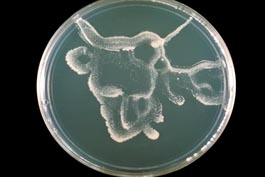
Yeast, or Candida albicans, is a fungus that lives in and on the body normally without causing problems. Yeast infections are an "overgrowth" of what is normally present in or on the body. When conditions change, yeast can increase and create symptoms. Infections can occur in or on a penis or external genitals, vagina or internal genitals, anus, and the genital area.
Yeast infections can be treated with over-the-counter medication.
If you have an overgrowth of yeast, your symptoms will depend on where the infection is located on your body. The most common symptoms include:
-
Vagina/internal genitals: You may experience itchiness, dryness, redness/swelling, and pain. Pain is sometimes worse during sex. You may also experience increased discharge that is often thick and cottage-cheese like in appearance.
-
Genital area: You may have a rash (red raised dots or bumps), itchiness, or white discharge.
*Note: If you have had lower surgery, your genital symptoms may vary.
The increase in yeast can be triggered by many factors, including taking antibiotics or corticosteroids, or having a lowered immune system. Yeast is not usually passed during sex, but sex can change the conditions in the vagina/internal genitals and cause yeast to increase.
Yeast does not usually lead to any serious health complications. You may get frequent yeast infections. If you have repeated yeast infections, talk to your health care provider.
There is also a higher chance of getting and passing
HIV if you have a yeast infection.
There are options for how you test for yeast. Testing is usually done with an exam and a swab sample.
It is best to get tested for yeast if you have symptoms.
Window Period (how long to wait before testing): Most test results are accurate once you have symptoms. In British Columbia, most test results should be ready in 10 days.
Yeast is treated with over-the-counter anti-fungal medications. Talk to your health care provider about treatment if you have a new sexual partner, have repeated yeast problems, are pregnant, or are not sure that you have a yeast infection. Your health care provider can test you and recommend the best treatment.
Your sexual partners should only be tested and treated if they have symptoms.
There are a number of things you can do to prevent yeast, including:
- use unscented soap or no soap at all on your genitals
- wear cotton underwear and loose clothing
- avoid unnecessary use of antibiotics
- have a diet low in sugar content
It is a good idea to be tested regularly for STIs, especially if you have new sexual partners or open relationships. Talking with partners about safer sex makes sure everyone knows what to expect. Condoms are great if they work for you.
